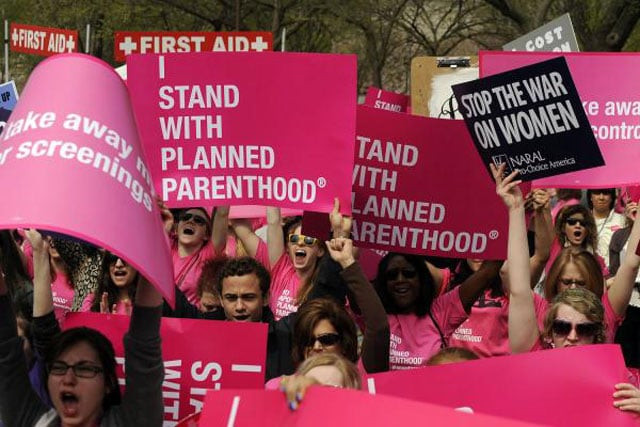Five things to know about Planned Parenthood
The group is being targeted by Republicans who have introduced legislation to block federal funding for them

The US health care provider Planned Parenthood, which recently marked its 100th year, is being targeted by anti-abortion Republicans who have introduced Congressional legislation to block federal funding for the group.
Although the non-profit organization says abortions account for only 3 percent of the services it provides, the funding cuts would threaten health care access for 2.5 million people.
Women's marches draw millions in resistance to Trump
Size
Planned Parenthood has 650 centers across the United States. Among its 2.5 million patients, 1.5 million rely on a form of federal health care insurance including Medicaid and Title X grants, which cover low-income Americans. If bills currently under consideration in Congress are passed, such programs would no longer pay for Planned Parenthood services.
Funding
Planned Parenthood has an annual budget of $1.3 billion, of which federal and local government funds account for 43 per cent.
Services
The majority of services Planned Parenthood provides include: contraception, 31 per cent; prevention and treatment of sexually transmitted diseases, 45 per cent; cancer prevention, seven per cent; and abortion, three per cent.
Trump: Women who get illegal abortions should be 'punished'
Demographics
In 2014, 15 per cent of those using Planned Parenthood services were black and 23 per cent Latinos. Fifty-four per cent of Planned Parenthood centers are located in rural areas or those lacking adequate medical facilities and specialists.
Effects of legislative restrictions
Before Texas passed stringent laws regulating abortions -- known as HB2 -- in 2013, 40 clinics provided abortions in the state. 21 have since closed.
In pictures: Women march against Donald Trump
After Texas excluded Planned Parenthood from a state-funded family planning program, a study published in the New England Journal of Medicine found that the law resulted in "a disproportionate increase in the rate of childbirth covered by Medicaid," adding, "it is likely that many of these pregnancies were unintended."



















COMMENTS
Comments are moderated and generally will be posted if they are on-topic and not abusive.
For more information, please see our Comments FAQ